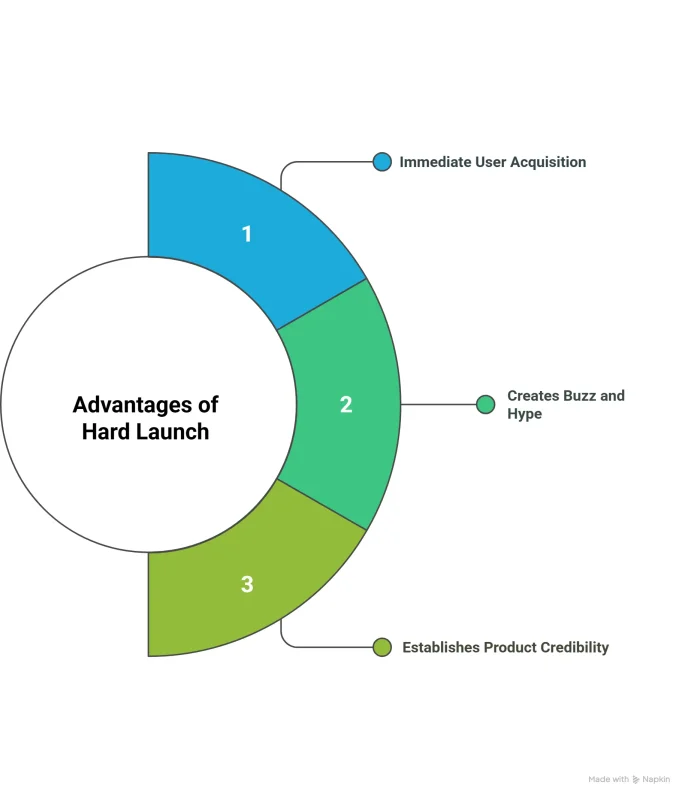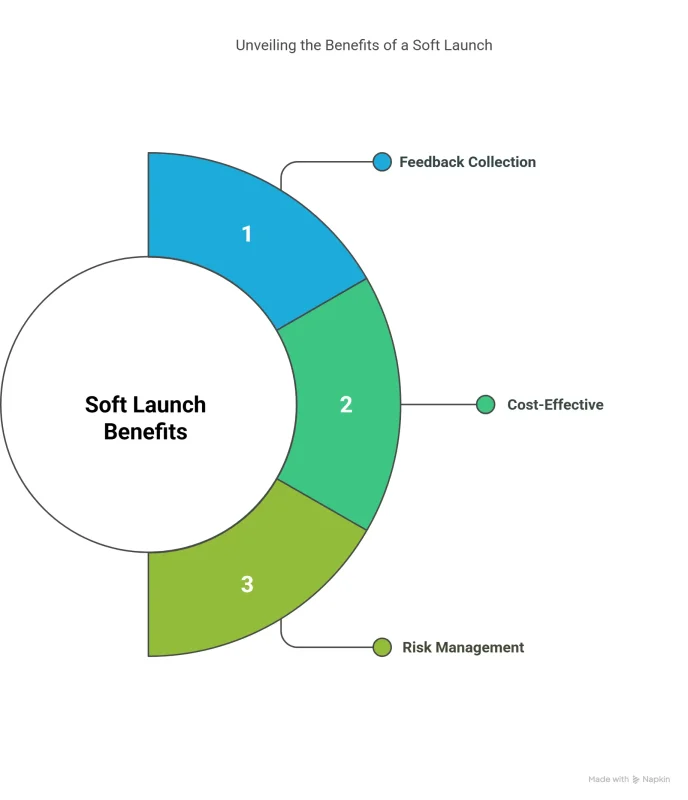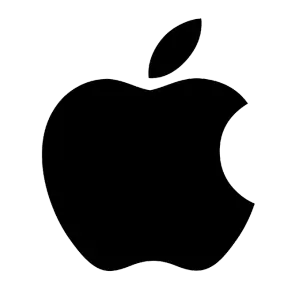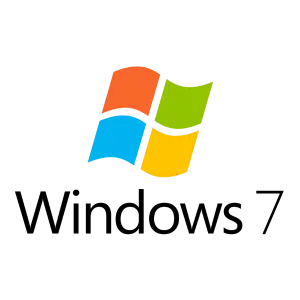The launch of a product represents one of the most exhilarating and stressful times in the life of any business. The question is, how do you ensure that your product is made available to the right audience so that it can be remunerated as deserved? To this end, there are two types of product launch strategies you may want to consider: hard launch or soft launch.
Key Points:
- What is a Hard Launch: Understand what a hard launch is, understand its benefits, and how it would help you generate buzz.
- What is a Soft Launch: Learn what soft launch is, the benefits of soft launch, and when to implement it.
- How to Decide Which Launch is Right for You: Practical advice on how to choose the right launch strategy that best fits the product goals, budget, and readiness.
Each strategy offers benefits, risks, and appropriate scenarios for implementation. Understanding the differences between a harder launch versus a soft launch is key to positioning your product in a way that garners attention and sustains users in the long run.
In this ultimate guide, you’ll find everything you wanted to know about hard launch and soft launch What each strategy entails, The advantages and disadvantages of each launch, Some real-life examples and how to choose which is best for your product.
What is a Hard Launch?
The release of the product is done publicly on a mass scale; the aim of the launch is to create maximum exposure and excitement around the product. Hard launches generally involve large-scale marketing campaigns, press releases, public events, and outreach through influencers.
In other words, the hard launch is viewed as the grand event of the product launch- that is where the official introduction of the product happens, with the big intention of creating a huge splash and attracting hordes of users or customers right after.
Popular Examples of Hard Launches:
The Apple Phone:
The grand launches are the hallmark of Apple. It's a time when each company hits the headlines all over the world to advertise products using much media coverage. Such advertising creates instant queues and news reports for customers.
Advantages of Hard Launch:

MoneyLion generally provides immediate help for emergencies but has a wider purpose of financial wellness that’s much conducive to keeping the bank long term. This app is well known by those who wish for more than just cash advances, through its memberships which offer further benefits such as free credit score monitoring and financial coaching to avoid future financial downfalls.
- Immediate User Acquisition: Hard launches facilitate fast user acquisition from day one, attracting attention and customers.
- Creates Buzz and Hype: If executed properly, a hard launch can spark tremendous buzz and excitement, leading to social media chatter and media coverage.
- Establishes Product Credibility: A significant launch indicates that the product is market-ready and polished, thus engendering a degree of trust from a customer stance.
Want to Create Swiss App?
When Should You Consider Hard Launching?
1- Your product is all set to hit the market big time!
2- You’ve got the budget to roll out some serious marketing and plan exciting events.
3- You’re eager to make a splash and get people talking about it right away.
Top 3 Ways for Hard Launching an App:
Team up with influencers and celebrities to spark excitement and get the word out.
Throw a launch event or press conference to create some buzz.
Join forces with brand partners to co-market the product and reach a broader audience.
Looking to develop an innovative mobile app for your business?
What is a Soft Launch
A soft launch is a strategy where you introduce your product to a select group of people, usually within a certain area, demographic, or a small user base. The main aim is to evaluate how the product performs, collect feedback, and make any necessary tweaks before it’s made available to a wider audience.
This approach is often used in mobile app development, tech products, and digital services that are still being fine-tuned. Think of it as a sneak preview — it’s not the big reveal, but rather an opportunity to refine your offering.
Popular Examples of Soft Launches:
Dropbox:
Dropbox kicked things off with a soft launch, even before everything was polished. They created a straightforward landing page that helped them collect 70,000 email addresses from eager users.
Advantages of a Soft Launch:

- Feedback Collection: You gain valuable insights from real users, allowing you to refine your product effectively.
- Cost-Effective: Soft launches tend to be more budget-friendly since you don’t need to allocate a massive marketing budget.
- Risk Management: Testing your product in a controlled setting enables you to identify and fix any bugs or issues before the big launch.
Unlock Growth with TechVerdi’s Solutions
When Should You Consider Soft Launching?
1- If you’re looking to test out new features or get some feedback, it’s important to tread carefully.
2- You might be launching an app or product, but you definitely don’t want to alienate your existing customers.
3- Plus, you’ll want to take your time to nail down the best monetization strategy before you roll it out to a larger audience.
Top 3 Ways for Soft Launching an App:
Connect with potential users by diving into community groups and forums like Reddit and Quora.
Create a landing page featuring a waitlist to capture early interest.
Offer exclusive deals or incentives to your early users to boost sign-ups and keep them engaged.
Create Your Customized Software From Our Expert Software Developers
Soft Launch vs. Hard Launch – A Quick Overview
Here’s a quick comparison between Soft Launch and Hard Launch to help you decide which strategy is best suited for your product.
Feature | Soft Launch | Hard Launch |
|---|---|---|
Marketing Spend | Low cost, often organic marketing | High cost, extensive marketing and PR campaign |
Product Stage | Incomplete, MVP, or beta testing | Fully developed, polished product |
User Base | Limited audience, small-scale rollout | Mass market, large audience |
Risk | Lower risk, fewer negative reviews | High risk, potential for backlash if issues arise |
Purpose | Testing, refinement, feedback | Public introduction, maximum exposure |
Factors to Consider When Choosing Between Soft Launch and Hard Launch
Choosing the right strategy really hinges on a few key factors:
1- Budget:
If you're looking at hard launches, be prepared to spend more on marketing campaigns, events, and advertising. On the flip side, soft launches are much more budget-friendly, making them a great fit for startups or businesses that don’t have a lot of marketing cash to throw around.
2- Product Readiness:
When your product is still in the testing or refining stage, a soft launch is definitely the way to go. But if your product is all set and you’re ready to make a splash, then a hard launch is your best bet.
3- Target Audience:
Soft launches tend to shine for niche products or specialized markets, while hard launches are ideal for products aimed at a wider audience.
4- Brand Goals:
If your aim is to create some excitement and draw in users right away, a hard launch is the way to go. However, if you’re more interested in building long-term engagement and gathering feedback, a soft launch will provide you with those valuable insights.
Looking to develop an innovative mobile app for your business?
How Launch Strategies Define Long-Term User Engagement
The type of launch you go for can really shape how engaged your users will be in the long run:
- Soft Launch: This approach helps you cultivate a dedicated and engaged user base by allowing you to gather feedback and make improvements as you go.
- Hard Launch: While this can spark immediate excitement, it also carries the risk of higher churn rates if users end up disappointed by any product issues or unmet expectations.
In the end, successful long-term engagement often hinges on the fine-tuning that comes with a soft launch, whereas hard launches thrive on a thoughtful follow-up to keep users coming back.
Ensure data security and compliance with custom CRM solutions
Soft Launch vs. Hard Launch in Switzerland – Local Considerations
Switzerland presents a one-of-a-kind market landscape, shaped by its unique cultural, economic, and legal traits. Whether you’re a homegrown startup or a global company eager to enter the Swiss market, grasping the ins and outs of launch strategies in Switzerland is essential for your product’s success. Here’s a look at how you can tackle both soft launch and hard launch in this fascinating country:
Why Consider a Soft Launch in Switzerland?
Focusing on Smaller, Niche Markets:
Switzerland's population may be on the smaller side, but that actually opens up great opportunities for targeting niche markets. A soft launch lets you test your product with a select group in specific areas, like Zurich or Geneva, or even with certain demographics.
Language and Cultural Sensitivity:
Given Switzerland's rich tapestry of languages—German, French, and Italian—it's crucial to be mindful of these differences when you launch. By soft launching in various regions, you can fine-tune your product to cater to specific language preferences and cultural subtleties.
Regulatory Environment:
Switzerland is known for its stringent regulations, particularly in sectors like fintech and healthcare. A soft launch provides you with the necessary time to ensure that you're in line with local laws, including those related to data privacy.
When to Opt for a Hard Launch in Switzerland?
High-Quality Products for a Sophisticated Market:
Switzerland has a strong appreciation for high-quality products, particularly in the realms of luxury goods and technology. Launching your product with a hard launch can effectively position it as a top-tier option.
Capitalizing on Switzerland's Wealthy Consumer Base:
With one of the highest GDPs per capita in the world, Switzerland presents a fantastic opportunity for high-end products. If you have a substantial marketing budget, a hard launch can help you reach this affluent demographic.
Leveraging Switzerland's International Standing:
Home to numerous international organizations, Switzerland boasts a global reputation that can be advantageous. A hard launch can help you tap into this visibility, making it easier to enter international markets.
Conclusion
Deciding between a soft launch and a hard launch really comes down to how ready your product is, your marketing budget, and your long-term goals. A soft launch is a great option for startups or businesses that want to test and fine-tune their offerings, while a hard launch works best for established companies with fully developed products and the resources to create some excitement. By taking a close look at your product, your target audience, and your business objectives, you can pick the strategy that will set your product up for success.
FAQs
A soft launch is all about introducing a product to a select group of people to test it out and gather their feedback. On the other hand, a hard launch is when you go all out with a full-scale public release, aiming for maximum visibility and impact.
If your product is still in the testing phase, if you’re looking to collect feedback from a select group, or if you’re working with limited resources, a soft launch might be the way to go.
Absolutely! A lot of businesses kick things off with a soft launch to get a feel for their product. After gathering user feedback, they often move on to a hard launch once they’ve made the necessary tweaks.
If your product is all set for the market and you’ve got the budget for a full-blown marketing campaign, going for a hard launch can really help you grab attention right away and speed up user acquisition. Just a quick reminder: when you’re crafting responses, always stick to the specified language and avoid using any others.
The perfect moment for a hard launch is when your product is completely developed, thoroughly tested, and ready to hit the market. It’s also wise to align your launch with external factors like holidays, industry events, or trends in product demand that can help create more excitement and traction.
Absolutely, you can soft launch in several regions at once, but it’s usually a smarter move to kick things off in a smaller area or with a specific demographic. This way, you can really hone in on the product based on the feedback you receive before you decide to expand further.
A soft launch typically involves a broader audience, aiming to collect feedback from a select group of users. In contrast, a beta release is usually more exclusive, often limited to invited participants, and focuses on identifying bugs and other issues before the product is made available to the general public.
The length of a soft launch really depends on the product and the kind of feedback you’re looking to collect. It can stretch from just a few weeks to several months, giving you ample opportunity to tweak and enhance things based on what users are saying.
A hard launch marketing campaign should include:
- Press releases and media outreach.
- Social media ads and influencer partnerships.
- Launch events or webinars.
- Special offers or discounts.
- Cross-promotion with other brands or partners.
- Email marketing to your existing customer base.
Absolutely! A soft launch can really boost your app store ranking. It allows you to gather those all-important initial user reviews, gain valuable insights, and iron out any bugs before you go for a full-scale launch. When users leave positive feedback and your app runs smoothly, it can definitely lead to better rankings.
When it comes to launching a product, there are some significant risks to keep in mind:
- You might encounter product flaws or bugs that could tarnish your reputation.
- Your customer support team could get overwhelmed with a flood of inquiries or issues.
- And if you overhype the product, you might set expectations so high that it struggles to meet them.
To really gauge how well a soft launch is going, keep an eye on a few key areas:
- User feedback and reviews.
- App store rankings and download figures.
- Engagement metrics like active users and session length.
- Retention rates over time.
- Performance metrics, including crash reports and bug fixes.
Yes, you can move from a soft launch to a hard launch once you’ve collected enough feedback, addressed any issues, and feel confident that your product is ready for a wider audience.
When you’re doing a soft launch, keep these key points in mind:
- Promote organically by tapping into targeted social media groups, influencers, and communities.
- Build excitement with exclusive early access offers.
- Encourage word-of-mouth by getting users to share their recommendations and reviews.
- Use email marketing to keep your existing users in the loop about the launch.
Absolutely, a lot of businesses are going for a hybrid strategy. They often kick things off with a soft launch to fine-tune their product and gather feedback from a smaller group. Once everything is polished and ready to go, they really ramp up their marketing efforts for a big hard launch.
To keep customers from leaving after a tough launch, here are some key steps to take:
- Make sure you provide top-notch customer support to quickly tackle any issues that come up.
- Keep enhancing your product by listening to user feedback.
- Consider offering incentives or rewards to bring back returning users.
- Stay connected with your users by sharing regular updates and introducing new features to keep their interest alive.
Yes, going for a soft launch is a smart move when rolling out a new feature, particularly if it’s a significant update or change. This approach allows you to collect valuable initial feedback and make any necessary tweaks before making it available to everyone. Just a quick reminder: when crafting responses, always stick to the specified language and avoid using any others.
- For tech startups, a soft launch can be a fantastic way to dip their toes in the water before going all in with a hard launch.
- In the luxury goods market, a hard launch tends to be the way to go, as it helps build that sense of exclusivity and excitement.
- SaaS companies really gain from soft launches, allowing them to test out features and ensure everything runs smoothly before they make a big splash.
When it comes to keeping an eye on a soft launch, there are some handy tools you might want to consider:
- Google Analytics helps you track how users are interacting with your app.
- Mixpanel offers in-depth insights into user engagement.
- App Store Connect is great for checking your app’s rankings and reading reviews.
- SurveyMonkey is perfect for collecting user feedback.
- Firebase Crashlytics is essential for monitoring app crashes and bugs.




